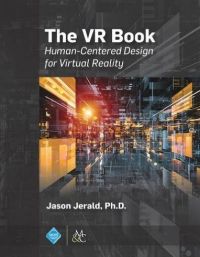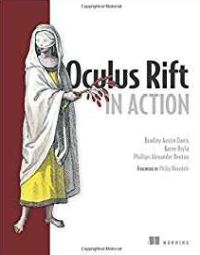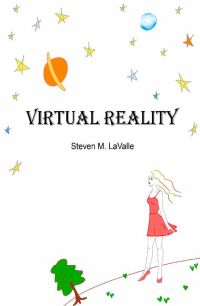Difference between revisions of "CSE190S2017"
| Line 12: | Line 12: | ||
Virtual reality (VR) has been capturing people’s imagination for decades, but only recently has it been possible to build VR devices inexpensive enough for the consumer market. This course aims to explain how VR technology works and the students are going to do programming projects to better understand potential and limitations of today’s VR hardware. | Virtual reality (VR) has been capturing people’s imagination for decades, but only recently has it been possible to build VR devices inexpensive enough for the consumer market. This course aims to explain how VR technology works and the students are going to do programming projects to better understand potential and limitations of today’s VR hardware. | ||
| + | |||
| + | |||
| + | ==Course Schedule== | ||
| + | |||
| + | [[CSE190S2017Schedule | Click here for the course schedule]]. | ||
| + | |||
| + | It lists lecture dates, homework due dates, and recommended reading. | ||
| + | |||
| + | ==Topics== | ||
The preliminary course structure looks like this: | The preliminary course structure looks like this: | ||
| Line 23: | Line 32: | ||
# Challenges with today’s HMD-based VR will be discussed and software driver components will be explained and implemented in C++ with OpenGL. | # Challenges with today’s HMD-based VR will be discussed and software driver components will be explained and implemented in C++ with OpenGL. | ||
| − | |||
| − | |||
| − | |||
| − | |||
| − | |||
| − | |||
| − | |||
| − | |||
| − | |||
| − | |||
| − | |||
| − | |||
| − | |||
| − | |||
| − | |||
| − | |||
| − | |||
| − | |||
| − | |||
==Prerequisites== | ==Prerequisites== | ||
* CSE167 (Introduction to Computer Graphics) or equivalent course or experience | * CSE167 (Introduction to Computer Graphics) or equivalent course or experience | ||
| − | |||
==Format== | ==Format== | ||
* Instructor: Dr. Jürgen Schulze | * Instructor: Dr. Jürgen Schulze | ||
| − | * Instructor's office hour: Tuesdays | + | * Instructor's office hour: Tuesdays 3:30-4:30pm, Atkinson Hall, Room 2125 |
* Number of Units: 4 | * Number of Units: 4 | ||
| − | * Section ID: | + | * Section ID: |
| − | * Lectures: Tuesday and Thursday, | + | * Lectures: Tuesday and Thursday, 2:00pm-3:20pm at PCYNH 122 |
| − | * Homework Discussion: | + | * Homework Discussion: TBD (starting week 2) |
| − | * First lecture: Tuesday, | + | * First lecture: Tuesday, April 4th, 2017 |
* Homework: programming assignments | * Homework: programming assignments | ||
| − | + | * Piazza page: https://piazza.com/class/j0wz2kpwjv7448 | |
| − | + | ||
| − | + | ||
| − | * Piazza page: piazza.com/ | + | |
* Designated computer lab for this course: CSE 210 (VR Lab) | * Designated computer lab for this course: CSE 210 (VR Lab) | ||
| − | * | + | * TA: Sainan Liu; see Piazza for office hours |
| − | * | + | * Tutor: Timothy Wang; see Piazza for office hours |
==Grading== | ==Grading== | ||
| Line 85: | Line 71: | ||
| 25% | | 25% | ||
|- | |- | ||
| − | | [[ | + | | [[CSE190S2017Video | Video Presentation]] |
| 5% | | 5% | ||
|} | |} | ||
Revision as of 17:01, 30 March 2017
Spring Quarter 2017
Course Number: CSE 190
Course Title: Virtual Reality Technology
Course Prerequisite: CSE 167
Enrollment Limit: 75
Course Description:
Virtual reality (VR) has been capturing people’s imagination for decades, but only recently has it been possible to build VR devices inexpensive enough for the consumer market. This course aims to explain how VR technology works and the students are going to do programming projects to better understand potential and limitations of today’s VR hardware.
Contents |
Course Schedule
Click here for the course schedule.
It lists lecture dates, homework due dates, and recommended reading.
Topics
The preliminary course structure looks like this:
- An overview of the state-of-the-art VR technologies and research trends will be given.
- The fundamental physics of 3D displays will be covered, including the major 3D depth cues.
- The most common display types such as LCDs and OLEDs will be introduced, in terms of display materials, device structures, working principles and research trends.
- We will look at various ways to create stereographics images.
- Several quasi-true 3D displays, including holography, volumetric 3D displays and light field displays will be introduced.
- Immersive VR systems will be discussed, including HMD-based systems. This part of the course will include a discussion of smart phone based HMDs as well as high end computer driven HMDs.
- Challenges with today’s HMD-based VR will be discussed and software driver components will be explained and implemented in C++ with OpenGL.
Prerequisites
- CSE167 (Introduction to Computer Graphics) or equivalent course or experience
Format
- Instructor: Dr. Jürgen Schulze
- Instructor's office hour: Tuesdays 3:30-4:30pm, Atkinson Hall, Room 2125
- Number of Units: 4
- Section ID:
- Lectures: Tuesday and Thursday, 2:00pm-3:20pm at PCYNH 122
- Homework Discussion: TBD (starting week 2)
- First lecture: Tuesday, April 4th, 2017
- Homework: programming assignments
- Piazza page: https://piazza.com/class/j0wz2kpwjv7448
- Designated computer lab for this course: CSE 210 (VR Lab)
- TA: Sainan Liu; see Piazza for office hours
- Tutor: Timothy Wang; see Piazza for office hours
Grading
| Project 1 | 15% |
| Project 2 | 15% |
| Project 3 | 15% |
| Final Project | 25% |
| Midterm | 25% |
| Video Presentation | 5% |
You will find your homework and other scores on TritonEd. Please verify a few days after after every due date that your score has been recorded correctly and inform your grader if you find an error.
There will be no assignment or indication of letter grades corresponding to scores on the individual exams and homework projects. The final grade depends on a weighted average of all the scores. The following grading key will be used:
| Final Score | Letter Grade |
|---|---|
| 100+ | A+ |
| 95+ | A |
| 90+ | A- |
| 85+ | B+ |
| 80+ | B |
| 75+ | B- |
| 70+ | C+ |
| 65+ | C |
| 60+ | C- |
For undergraduate students with the P/NP option: A pass (P) grade will be given for an average score of 60 or higher.
For graduate students with the S/U option: A satisfactory (S) grade will be given for an average score of 75 or higher.
Homework Assignments
The following links will become active once the homework projects have been posted on line:
- Homework Assignment #1: Big Wall, due Friday, Jan 27th at 2pm
- Homework Assignment #2: VR Classroom, due Friday, Feb 10th at 2pm
- Homework Assignment #3: Air Race, due Friday Feb 24th at 2pm
- Final Project, due March 21st at 11:30am
Each project can be done in teams of two. Solo work is permitted but discouraged. There are the same expectations on the project outcomes whether they are done in teams or solo.
All projects must be demonstrated to the course staff on or before the due date. There is a dedicated grading session on Fridays at 2pm in CSE 210.
Late submissions will NOT be accepted.
Optional Textbooks
You won't need to buy a textbook for this course because the lecture slides will be made available to you. However, if you want more background information, we recommend the following books:

|
The VR Book |

|
Oculus Rift in Action |

|
Virtual Reality |
Students with Disabilities
If you have a documented disability, please bring your documentation to me as soon as possible so that I can make suitable accommodations for you. If you believe that you have a disability and desire accommodation, please register with the Office for Students with Disabilities.